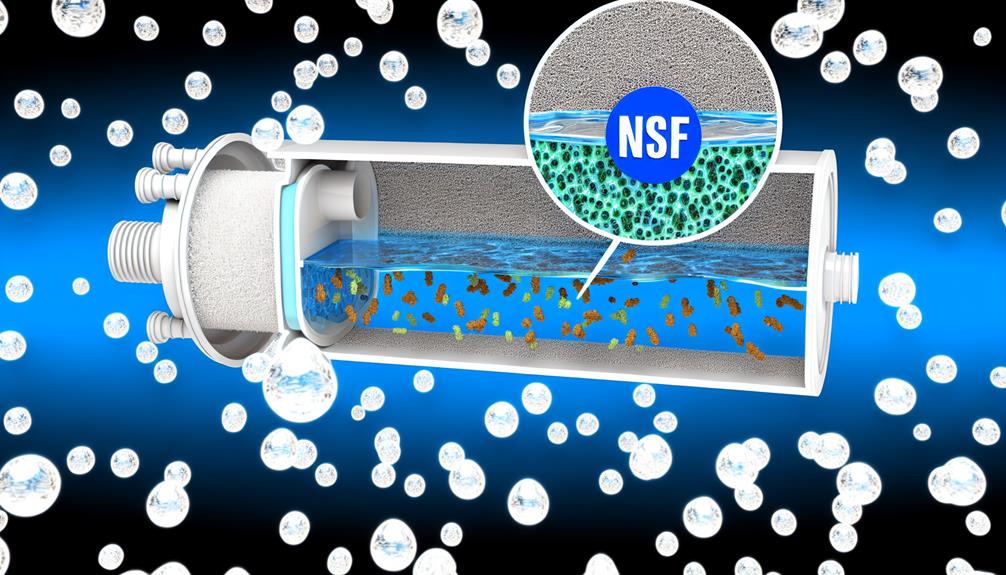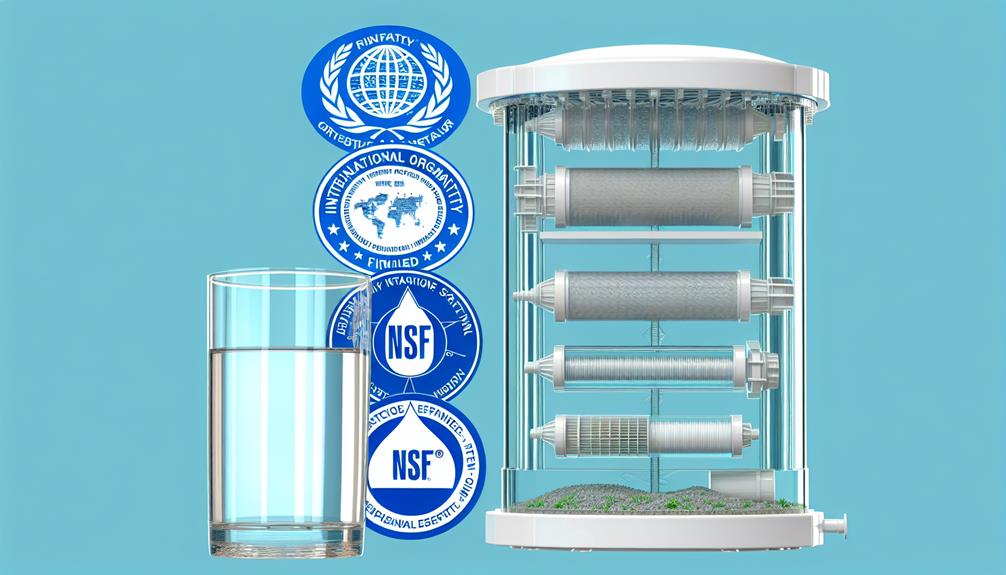Imagine you're a navigator setting sail across the vast ocean of water filtration, where the ISO standards are your map and compass.
You understand that in this journey, the precision with which you align your practices to these standards can mean the difference between smooth sailing and turbulent waters.
As a professional in the field, you're well aware that ISO 7704:2023 is not just a document, but a beacon guiding your process to ensure the safety and efficacy of your water filters.
With this standard as your North Star, you'll need to chart a course through the intricate requirements and performance testing methods that it prescribes.
But how exactly do you translate these guidelines into tangible quality improvements in your water filtration systems?
Stay with me, and together we'll navigate the complexities of compliance, steering toward the coveted shores of certification and market trust.
Understanding ISO 24510:2007
Let's delve into ISO 24510:2007, a crucial standard that outlines the performance criteria and testing methodologies for non-sewered sanitation systems, ensuring they're safe, functional, and environmentally considerate. This International Standard proposed by the ISO is a comprehensive guide that applies to diverse types of water-handling systems, including those in recreational vehicles, boats, and remote setups.
With precision, the Standard's clauses meticulously address construction quality, effective waste containment, proper ventilation, and the discharge of treated effluent, minimizing the risk of contaminants entering the environment.
You'll find this Standard under systematic review to maintain relevancy and efficacy in Water Treatment solutions, including Microbiological Water Purifiers.
ISO 24511:2007 Implementation Steps
Building upon the framework established by ISO 24510:2007, ISO 24511:2007 lays out the essential steps for effectively implementing water filters to ensure they meet the rigorous criteria set forth in the former standard. As you delve into the implementation of filtration systems, you'll need to prioritize adherence to these precise guidelines to secure safe drinking water.
Begin by thoroughly assessing and selecting water filters that are certified to reduce harmful contaminants, aligning with the NSF Standards, specifically NSF/ANSI 53 Total PFAS. Your chosen system, whether it relies on reverse osmosis or other technologies, must demonstrate the capacity to reduce contaminants effectively. Installation should follow the manufacturer's specifications to maintain the integrity of the system's performance.
Operational procedures must include regular monitoring to verify that the filters inactivate or kill bacteria and maintain the expected level of contaminant removal. In your routine maintenance schedule, you must incorporate the ISO 24511:2007 quality management systems, ensuring compliance with the overarching ISO 24510 standards.
Benefits of ISO 24512:2007 Compliance
Achieving ISO 24512:2007 certification offers water filter manufacturers several tangible benefits, including enhanced global recognition for quality and performance. This certification demonstrates your commitment to adhering to high international standards, which can significantly boost consumer confidence in the effectiveness of your water filters.
Your compliance with ISO 24512:2007 also positions your products as reliable and safe, capable of reducing the amount of contaminants that cause negative health effects. These include, but aren't limited to, emerging contaminants and volatile organic chemicals. By meeting these rigorous requirements, you not only uphold the structural integrity of water filtration systems but also align with NSF guidelines, which are widely regarded as national standards for assessing the safety and efficacy of water treatment products.
Furthermore, adopting standard practices such as the use of ultraviolet technologies to tackle microbiological contaminants indicates a forward-thinking approach to addressing modern water purification challenges. This proactive stance may provide you with a competitive edge, as it reflects the readiness to meet and exceed standard for the reduction of a broad spectrum of impurities.
In essence, ISO 24512:2007 compliance can open new market opportunities, enhancing your brand reputation and differentiating your offerings in the crowded water filtration industry.
Navigating ISO 17852:2006 Specifications
Understanding the specifications of ISO 17852:2006 is crucial for accurately detecting and enumerating the presence of Pseudomonas aeruginosa in various types of water, including those intended for human consumption. The standard's precision is vital for ensuring water safety and quality.
When you're looking to certify a microfilter as the world's first client that meets stringent health and safety standards, NSF/ANSI can help. Their certification process verifies that products can reduce harmful contaminants, including Pseudomonas aeruginosa, which ISO 17852:2006 targets. Here's what you need to know about navigating the specifications:
- Sample Preparation: The standard applies to water with low background flora, ensuring clarity in detection.
- Detection Method: Membrane filtration is the prescribed method for identifying Pseudomonas aeruginosa, guaranteeing accuracy.
- Enumeration Protocol: Detailed guidelines for counting the bacteria provide the consistency needed for reliable results.
Achieving ISO 24518:2015 Certification
To secure ISO 24518:2015 certification, you must meticulously adhere to the standard's criteria for crisis management of water and wastewater services. This involves a detailed assessment that verifies an organization's ability to manage incidents that could cause negative human health impacts due to water service failures. As you embark on this process, understand that ISO 24518:2015 isn't just a badge of honor; it's a commitment to maintaining the health and safety of the community you serve.
Your organization will need to demonstrate a robust understanding of potential crises, including the presence of cysts in contaminated water, which is a leading global public health concern. You'll be expected to have comprehensive plans that address such risks, incorporating advanced cybersecurity systems to protect critical water infrastructure from digital threats.
Engaging with a public health and safety organization for an independent review can be instrumental. Programs like NSF's Bundled Prop offer services that include the First Joint Surveillance Voluntary Assessment, which can be a valuable step toward achieving certification. This collaborative approach ensures that your crisis management strategies aren't just compliant, but also effectively safeguard against events that can endanger public health.

